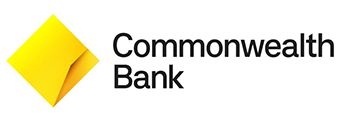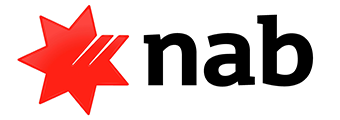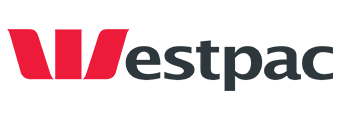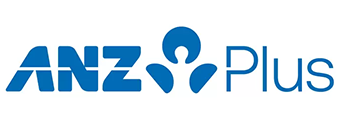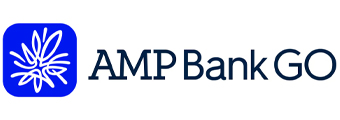
- Overdrawing your account means to go into negative balance, usually due to a regular, reoccuring payment going through successfully despite funds not being available in a transaction account
- An overdraft facility, on the other hand, operates like a line of credit and demands interest is paid on borrowed funds
- Some transaction accounts might allow for an unarranged overdraft facility if a person's balance slips below $0
Accounts that offer the option to overdraw have become a staple of both personal and business banking. Most of Australia’s bigger banks, like Commonwealth Bank, Westpac, ANZ, and NAB, as well as some smaller institutions, offer the option to overdraw on many of their transaction accounts. But not all basic accounts will offer the same, particularly if they are designed for younger people.
It's likely that a person’s bank will charge them a fee for overdrawing their account and it might charge interest on funds it provides a third-party that it can’t access through the account.
Overdrawing your account is different to an overdraft facility. The latter is essentially a line of credit facility. Those who hold an account with an overdraft facility can spend a certain amount more than the balance of their account without incurring overdrawn or dishonour fees, though they might have to pay interest on the borrowed funds.
How overdrawing your account works
One of the most common ways customers overdraw their account is through automatic direct debits.
For example, you might have a gym membership that costs you $15 a week.
If one particular week, when it comes time to pay, you happen to not have enough funds, the amount might still be direct debited but your account balance could be negative afterwards.
Your bank might give you a grace period of a few hours to top up your balance and return it to the green, or it might automatically charge you a fee for overdrawing. Some banks, like NAB, have scrapped overdrawn fees but may still charge interest on the amount an account is overdrawn by.
Australian banking: What is an overdraft facility?
A bank overdraft is a feature of a transaction account that allows you to make withdrawals or transactions that will put your account balance below $0.
They are less common now than they used to be, with only one of Australia’s big four banks (CommBank) still offering overdraft facilities on personal transaction accounts. However, businesses still have a wealth of choice when it comes to overdraft facilities.
An overdraft facility is a form of short term unsecured credit and may be allowed up to a certain limit, usually dependent on the creditworthiness of the account holder. Interest normally applies to funds borrowed through the facility and account fees are often also charged.
Like a maximum limit on a credit card, those with an overdraft facility will likely have a certain amount they can overdraft. This limit usually starts at around $500, but can be in excess of $10,000. Interest is generally only charged on the money borrowed, not the limit. Again, account fees may apply if you utilise an overdraft facility.
Advertisement
| Bank | Savings Account | Base Interest Rate | Max Interest Rate | Total Interest Earned | Introductory Term | Minimum Amount | Maximum Amount | Linked Account Required | Minimum Monthly Deposit | Minimum Opening Deposit | Account Keeping Fee | ATM Access | Joint Application | Tags | Features | Link | Compare | Promoted Product | Disclosure |
|---|---|---|---|---|---|---|---|---|---|---|---|---|---|---|---|---|---|---|---|
1.55% p.a. | 4.45% p.a. Intro rate for 5 months then 1.55% p.a. | $555 | 5 months | $0 | $99,999,999 | $0 | $0 | $0 | |||||||||||
0.01% p.a. Bonus rate of 4.14% Rate varies on savings amount. | 4.15% p.a. | $846 | – | $0 | $99,999,999 | $1 | $0 | $0 | |||||||||||
0.10% p.a. Bonus rate of 4.15% Rate varies on savings amount. | 4.25% p.a. | $867 | – | $0 | $99,999,999 | $$formattedMinMonthlyDep.format("%,d",$!{product.minimumMonthlyDeposit}) | $0 | $0 | |||||||||||
4.15% p.a. | 4.15% p.a. | $846 | – | $0 | $4,999 | $0 | $0 | $0 |
How to get an overdraft facility
Most banks that offer overdraft facilities will let you apply for one online via their internet banking portal or their mobile app. When applying, you will need to prove to the bank you will be able to repay any funds you borrow through your overdraft.
Thus, you might need to provide pay slips or a tax statement demonstrating your income. If you offer up a security (for instance, your car or some portion of the equity you have in your home) you might be able to receive a lower interest rate on any funds borrowed through the facility, as you might be seen as a lower-risk borrower.
There will probably be criteria you’ll have to meet, as with any credit agreement, but that might not as strict as the requirements for a larger loan, credit card, or mortgage. You’ll most likely need to be at least 18 years of age, have some form of regular income, and be an Australian citizen or resident.
When you’re applying for an overdraft, you’ll need to provide some form of ID, your tax file number, and your bank account details.
The difference between an arranged and unarranged overdraft facility
An unarranged or accidental overdraft can occur when bank fees, direct debits, or transactions push an account balance below $0 without a formal overdraft facility being in place. The terms and conditions of unarranged overdraft facilities will vary from provider to provider, and many banks won’t offer them at all.
If you’re unsure whether your account would provide an unarranged overdraft, you can check its terms and conditions.
The fees that apply in cases of unarranged overdrafts will also vary. Interest is normally charged on the amount borrowed until the account balance is positive. Some providers will have grace periods that allow you to just pay interest on the amount borrowed up until a certain time, without it compounding.
Example of an unarranged overdraft
Imagine you are using a card that’s linked to a transaction account that allows for an unarranged overdraft.
You might also be buying lunch for $15. But wait, there is only $7 in your account. In many instances, your transaction will be declined and you would be left hungry.
However, if you have an overdraft facility, your payment would be accepted and the bank will automatically lend you $8 ($15 - $7) in the form of an overdraft. Your bank balance would likely show up as -$8 afterwards and you might be charged a flat fee.
If your bank allows an overdraft up to the value of, say, $50, you can continue making all the transactions you would usually make until the account balance is at -$50. You would also likely be charged interest on the money you’ve essentially ‘borrowed’ from the bank to make those transactions.
Overdrafts & overdrawing: Pros & cons
Advantages of overdrafting
Short term liabilities
Overdrafts are useful in situations where you don’t have enough money in an account to pay a short term liability. If you’ve had to take some unpaid leave from work right around the time your quarterly electricity bill is due, for instance. If you don’t have the full amount in your account, rather than go into arrears with the energy company, you can use an overdraft to meet your short term obligations and then pay off the resulting debt.
No loan application process
In a situation where a person needs short term credit, an overdraft might ultimately be the simplest way they can secure it. As discussed, unarranged overdrafts can happen automatically, without the need for a loan application.
This is particularly useful for companies, as they would normally have far higher overdraft limits than individuals.
No repayment schedule
Unlike conventional loans, overdrafts typically don’t have a schedule for when your repayments are due. Instead, you simply accumulate interest as long as your account is negative, with said interest being deducted from the account’s balance, until the debt is repaid.
Disadvantages of overdrafting
Cost
While overdrafting an account can be convenient, it can also end up being an expensive exercise Interest rates on overdraft facilities tend to be higher than those on personal loans, and account fees will also apply in a lot of cases.
Furthermore, if you don’t return your account balance to the green promptly, the interest that’s charged to you can compound. The longer your account is in overdraft, the more interest you will probably need to pay, and you might end up paying interest on interest (on interest).
Repayable on demand
In the terms and conditions of many accounts that allow overdrafts, it will stipulate that the overdraft amount is repayable on demand. This means that the credit provider has the right to demand immediate payment of the overdraft amount.
Impact on credit score
Transaction accounts are usually not surveilled by credit reporting agencies. However, some have implemented transaction reporting.
While a one-off unarranged overdraft is unlikely to impact your credit score, regularly dipping into arrears might leave a dint. Further, if your account goes negative, it means you are indebted to your bank. Failure to bring your the account balance back above $0 could reflect in your credit report as it’s seen as a form of credit with interest or fees payable.
First published in January 2022
